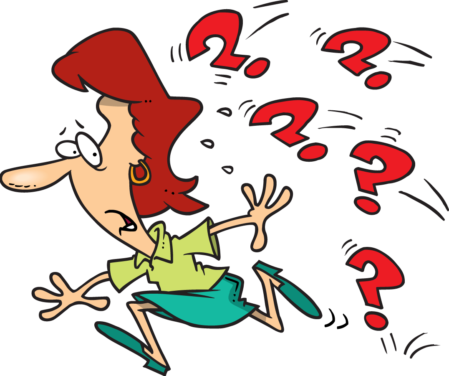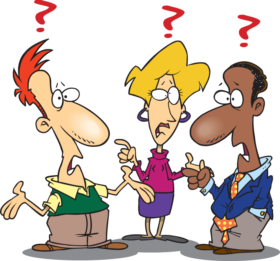Make Buy Decisions

Example 1 Make-Buy
Quality Bikes
Quality Bikes, Inc., currently produces racing bikes. Management is interested in outsourcing production of these bikes to a reputable manufacturing company that can supply the bikes for $600 per unit. Quality Bikes incurs the following annual production costs to produce 2,000 racing bikes internally:
| Per Unit | Total Annual Cost at 2000 Units | |
| Variable production costs | ||
| Direct materials | 400 | 800,000 |
| Direct labor | 100 | 200,000 |
| Manufacturing overhead | 50 | 100,000 |
| Fixed production costs | ||
| Factory building and equipment lease | 180,000 | |
| Factory insurance | 60,000 | |
| Production supervisors' salaries | 70,000 | |
| Total production costs | 1,410,000 |
Outsourcing production eliminates all variable production costs, the production supervisor’s salary, and factory insurance costs. Factory building and equipment lease costs will remain the same regardless of the decision to outsource or to produce internally.
1. Perform differential analysis using the format presented in the following Table Make-or-Buy Differential Analysis. Assume making the bike internally is Alternative 1, and buying the bike from an outside manufacturer is Alternative 2.
2. Which alternative is best? Explain.
3. Summarize the result of outsourcing production using the format presented below in the Summary of Differential Analysis for Best Boards, Inc.
| Make or Buy Differential Analysis | Alternative 1 Make Internally | Alternative 2 buy from outside | Differential Amount | Alternative 1 is |
Variable costs | ||||
Cost to buy from outside | 0 | 1,200,000 (1) | (1,200,000) | Lower |
Direct materials | 800,000 | 800,000 | Higher | |
Direct labor | 200,000 | 200,000 | Higher | |
Manufacturing overhead | 100,000 | 100,000 | Higher | |
Fixed costs | ||||
Factory and equipment lease | 180,000 | 180,000 | 0 | |
Factory insurance | 60,000 | 0 | 60,000 | Higher |
Supervisors' salaries | 70,000 | 0 | 70,000 | Higher |
Total production costs | 1,410,000 | 1,380,000 | 30,000 | Higher |
(1) $1,200,000 = $600 per unit × 2,000 units.
Buying the bikes from an outside supplier is the best alternative. This alternative results in total costs of $1,380,000, providing $30,000 in savings compared to the $1,410,000 cost of producing bikes internally
Summary of Differential Analysis for Best Boards, Inc.
| Outsourcing Bikes | |
| Cost increase to buy from outside | (1,200,000) |
| Direct materials costs savings | 800,000 |
| Direct labor costs savings | 200,000 |
| Manufacturing overhead costs savings | 100,000 |
| Factory insurance cost savings | 60,000 |
| Supervisors' salary cost savings | 70,000 |
Cost savings from outsourcing | 30,000 |
Note: Amounts shown in parentheses indicate a negative impact on profit, and amounts without parentheses indicate a positive impact on profit.
Example 2 Make-Buy
Best Boards
Best Boards produces each wakeboard for $110, and Jim Muller, vice president of operations, received a bid for $70 per board from an outside manufacturer. Best Boards’ president asked the company’s accountant, Amy Eckstrom, to investigate whether it makes sense for Best Boards to hire an outside company to produce the wakeboards. What information should Amy provide that will help management make this decision?
After further research, Amy identified the following product costs associated with wakeboard production at Best Boards:
| Per Unit | Total Annual Costs at 2000 units | |
| Variable Production Costs | ||
| Direct Materials | 30 | 300,000 |
| Direct Labor | 16 | 160,000 |
| Manufacturing Overhead | 10 | 100,000 |
| Fixed Production Costs | ||
| Factory equipment lease | 110,000 | |
| Factory building rent | 290,000 | |
| Production supervisors' salaries | 140,000 | |
| Total Costs | 1,100,000 |
Since Best Boards produces 10,000 wakeboards each year, the product cost per unit is
$110 (= $1,100,000 ÷ 10,000 units). However, Amy must identify which of the costs listed previously are differential costs if the company acquires the wakeboards from an outside producer. That is, Amy must determine which costs will change and which will remain the same.
Here’s what she found:
• All variable production costs will be eliminated if Best Boards buys the wakeboards rather than making them. These are differential costs.
• The factory equipment lease will continue for several years whether Best Boards makes or buys the wakeboards. This is not a differential cost.
• The factory building lease covers several years, so this cost will continue whether Best Boards makes or buys the wakeboards. This is not a differential cost.
• One of Best Boards’ two production supervisors was hired recently, is paid $50,000 per year, and can be let go if needed. This is a differential cost.
• The other of Best Boards’ two production supervisors has been with the company for several years, is paid $90,000 per year, and has five years remaining on her contract. This is not a differential cost.
Because the focus of make-or-buy decisions is on product costs, and because sales revenue is not differential to this decision, it is not necessary to include sales revenue in the analysis. This in turn eliminates the need to show the contribution margin or net income. (Even if sales revenue were included, the outcome would remain the same.)
What does Amy’s analysis tell us?
That we'll save $90,000 by making the wakeboards internally.
| Make or Buy Differential Analysis | Alternative 1 Make Internally | Alternative 2 Buy From Outside | Differential Amount | Alternative 1 is |
| Variable costs | ||||
| Cost to buy from outside | 0 | 700,000 | (700,000) | Lower |
| Direct material | 300,000 | 0 | 300,000 | Higher |
| Direct labor | 160,000 | 0 | 160,000 | Higher |
| Manufacturing overhead | 100,000 | 100,000 | Higher | |
| Fixed costs | ||||
| Factory equipment lease | 110,000 | 110,000 | 0 | |
| Factory building rent | 290,000 | 290,000 | 0 | |
| Production supervisors' salaries | 140,000 | 90,000 | 50,000 | Higher |
| Total production costs | 1,100,000 | 1,190,000 | (90,000) | Lower |
Using a Summary Format for Differential Analysis
Question: The Differential Amount column presented above Make-or-Buy Differential Analysis for Best Boards, Inc. indicates Best Boards would be better off producing wakeboards internally. However, management may want a more concise explanation of why production costs are $90,000 higher when outsourcing production. How can we present this information in a more concise format?
Answer: We show a more concise presentation in the Summary of Differential Analysis for Best Boards, Inc., which includes the Differential Amount column shown in our Make-or-Buy Differential Analysis along with a brief description for each item.
Look closely at our Differential to confirm that the Differential Amount column matches our Summary of Differential Analysis for Best Boards, Inc., and review the explanation of the difference for each line item. As you compare these two figures, notice that only differential costs are presented in the Summary of Differential Analysis for Best Boards, Inc., and therefore costs for the factory equipment lease, factory building rent, and a portion of supervisor salaries are excluded from the Summary of Differential Analysis for Best Boards, Inc. That is, costs that do not differ from one alternative to another are excluded from the summary differential analysis since this information is irrelevant to the decision.
The amounts in parentheses in our Summary of Differential Analysis for Best Boards, Inc. indicate a negative impact on profit, and amounts without parentheses indicate a positive impact on profit.
Summary of Differential Analysis for Best Boards, Inc.
| Outsourcing Wakeboards | |
| Cost increase to buy from outside | (700,000) |
| Direct materials cost saving | 300,000 |
| Direct labor cost savings | 160,000 |
| Manufacturing overhead cost savings | 100,000 |
| Supervisor salaries cost saving | 50,000 |
| Cost increase from outsourcing | (90,000) |
Note: Amounts shown in parentheses indicate a negative impact on profit, and amounts without parentheses indicate a positive impact on profit.
The analysis shown in our Summary of Differential Analysis for Best Boards, Inc. is particularly useful if all costs are not easily identified, and differential costs can be determined. After all, the goal of differential analysis is to analyze the costs that differ from one alternative to the next. We often use the term avoidable costs to describe a cost that can be avoided, or eliminated, if one alternative is chosen over another. If Best Boards chooses to buy the product from an outside producer, the company avoids such costs as direct materials, direct labor, manufacturing overhead, and the salary of one supervisor. In this context, avoidable cost is the same as differential cost.
